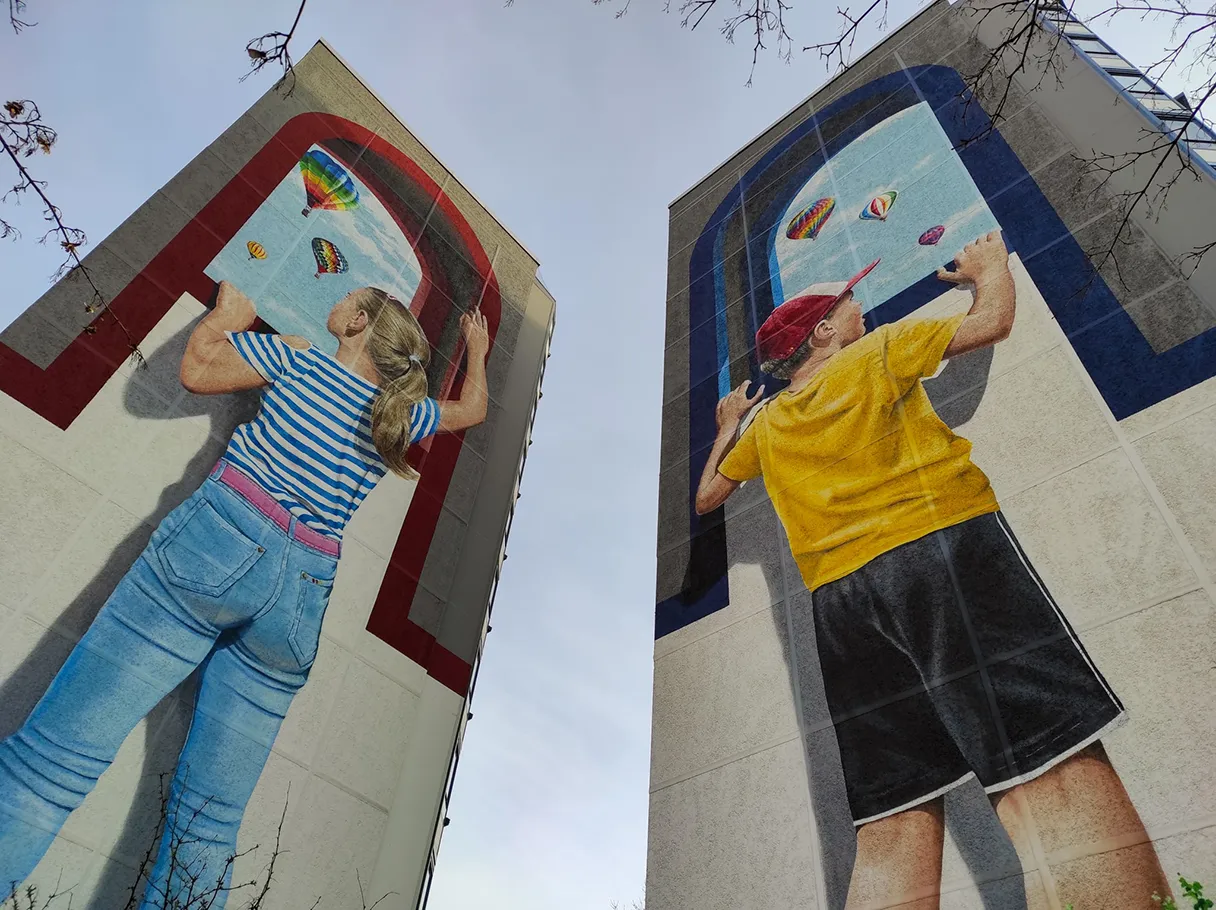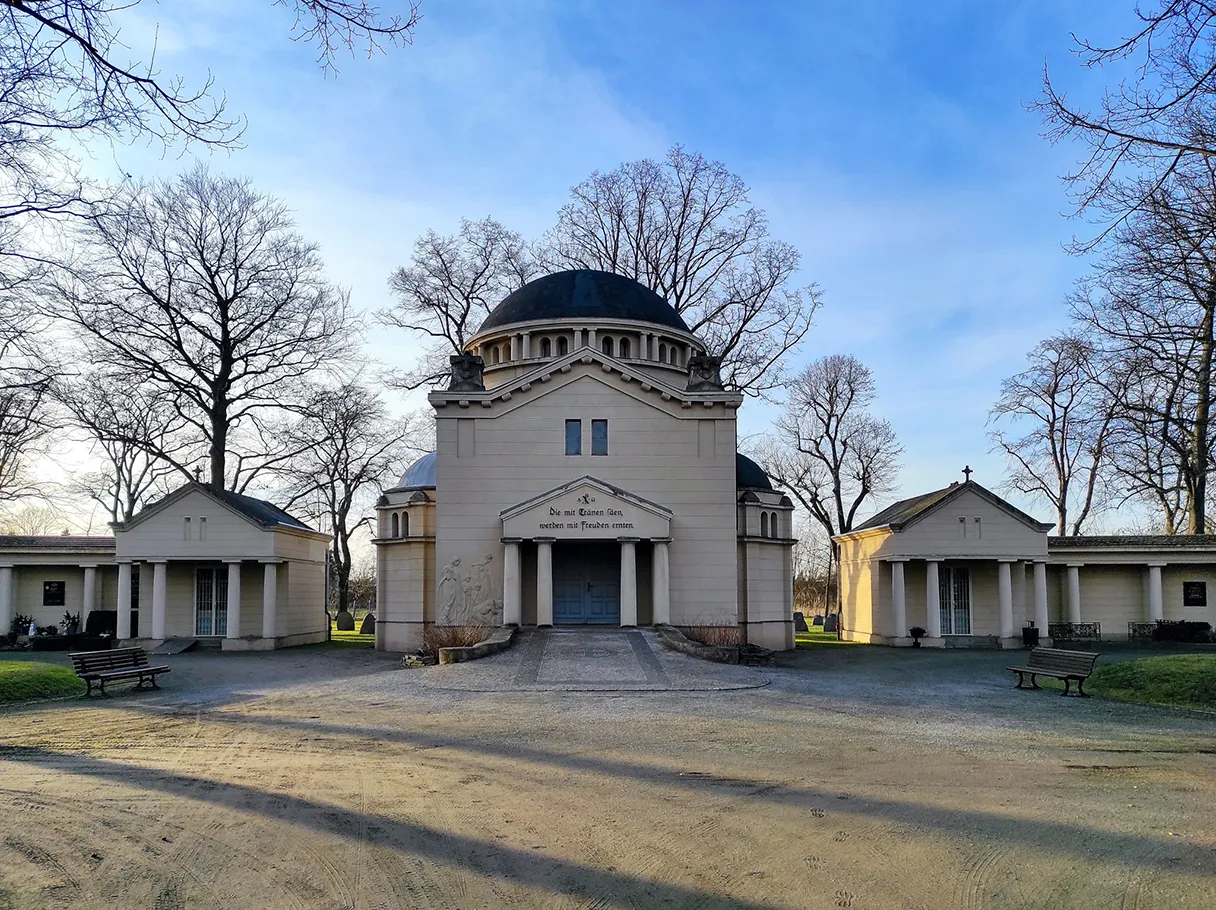 Photo: Stefanie Jost
Photo: Stefanie Jost
96 Berlin boroughs in a row: A for Altglienicke
#Altnickitown
Belongs to the district of Treptow-Köpenick and is also known among locals as #altnickitown.
 Photo: Stefanie Jost
Photo: Stefanie Jost
📌 Facts:
- Area of 7.9 km²
- Celebrities: Armin Mueller-Stahl (actor, lived in Altglienicke during GDR times)
- Sights: Water tower, Kosmosviertel, Normannen pharmacy with Art Nouveau fresco, Bruno Taut housing estate (Tuschkastensiedlung).
The village Glinik is mentioned for the first time in the land book of Emperor Charles IV from 1375, the earliest list of villages in the Berlin area. An imperial decree established the municipality of Altglienicke on April 17, 1893, which quickly acquired identity and importance. In the old village center, around the parish church (1895), large parts of the "old" village have been preserved. Otherwise, Altglienicke is characterized by residential neighborhoods with single-family houses and multi-story buildings.
 Photo: Stefanie Jost
Photo: Stefanie Jost
"Altglienicke also played a role in one of the most spectacular espionage affairs of the Cold War: the telecommunications lines from the Soviet embassy in Berlin-Mitte and the KGB headquarters in Karlshorst to the German Red Army headquarters in Wünsdorf ran under Altglienicke. In the 1950s, the Americans and British had a tunnel dug from West Berlin's Rudow to under Schönefelder Chaussee in order to tap into Soviet communications. After a double agent betrayed the enterprise, the Soviets were able to mislead Western espionage with false information over a 14-month period. In 1956, KGB technicians finally penetrated the tunnel and suddenly found themselves in the Americans' amplifier room. The tunnel was immediately blocked off, and the radar station built in Rudow as a camouflage was dismantled in 1995." (Source: www.berlin.de)
